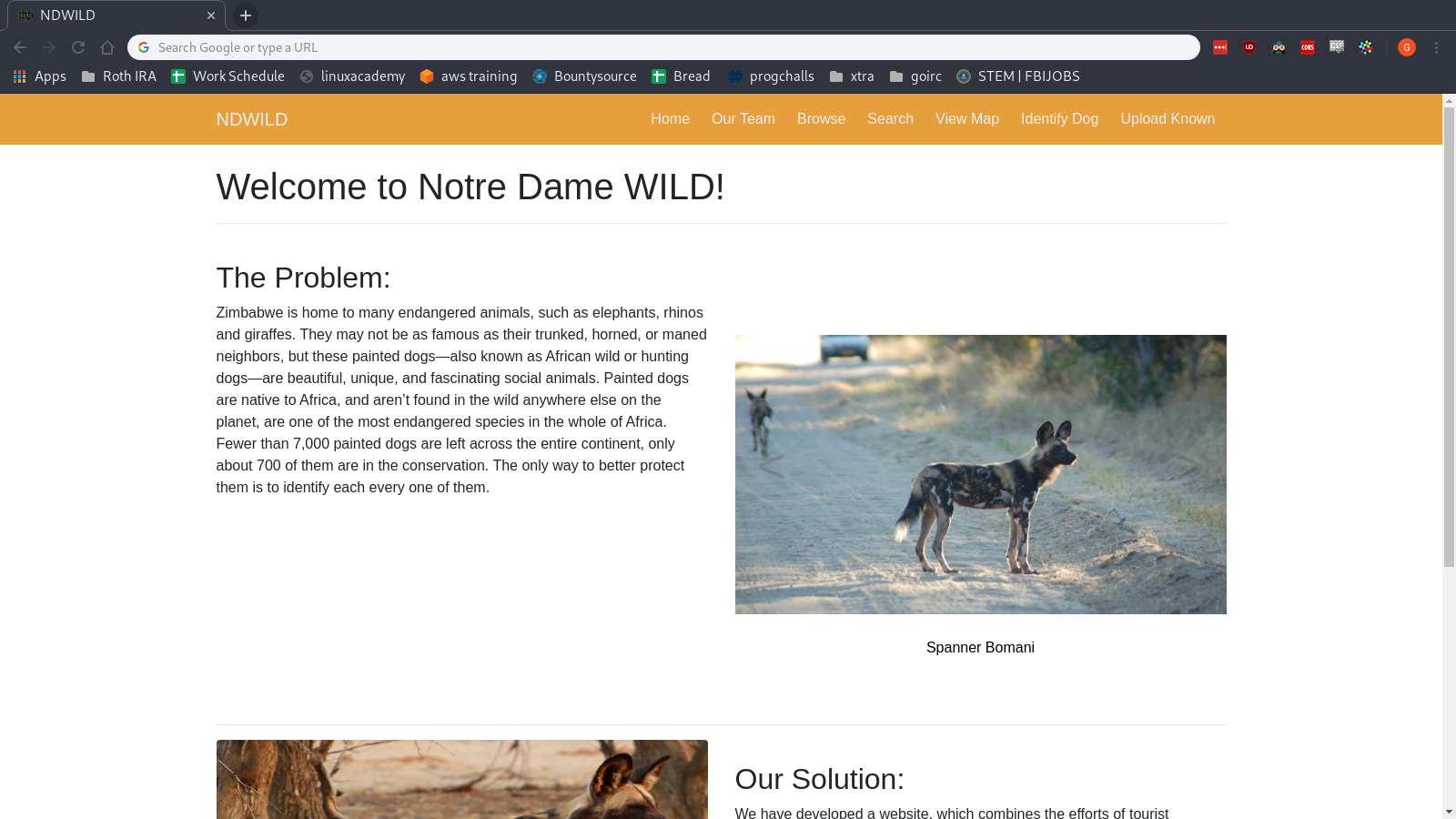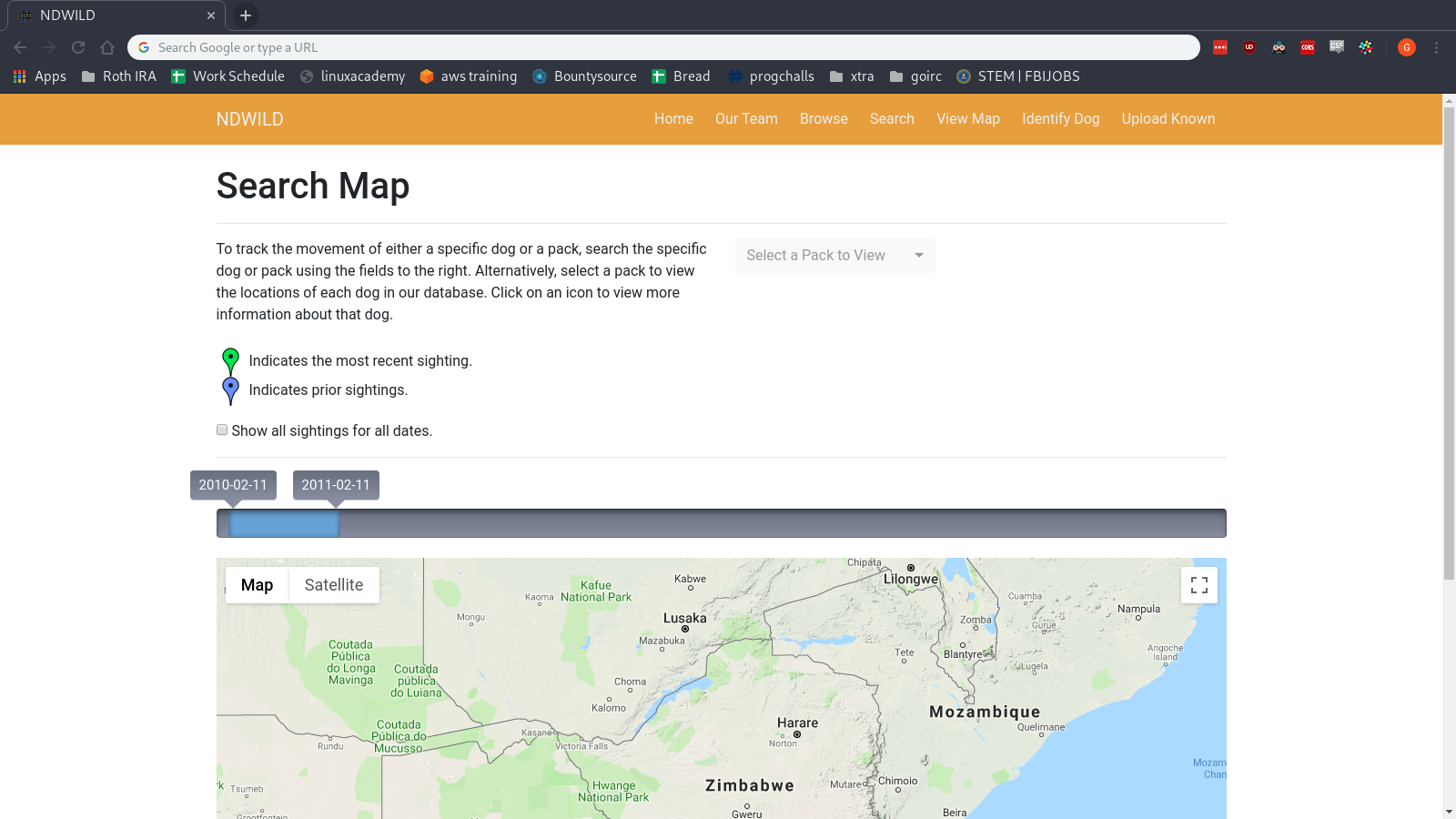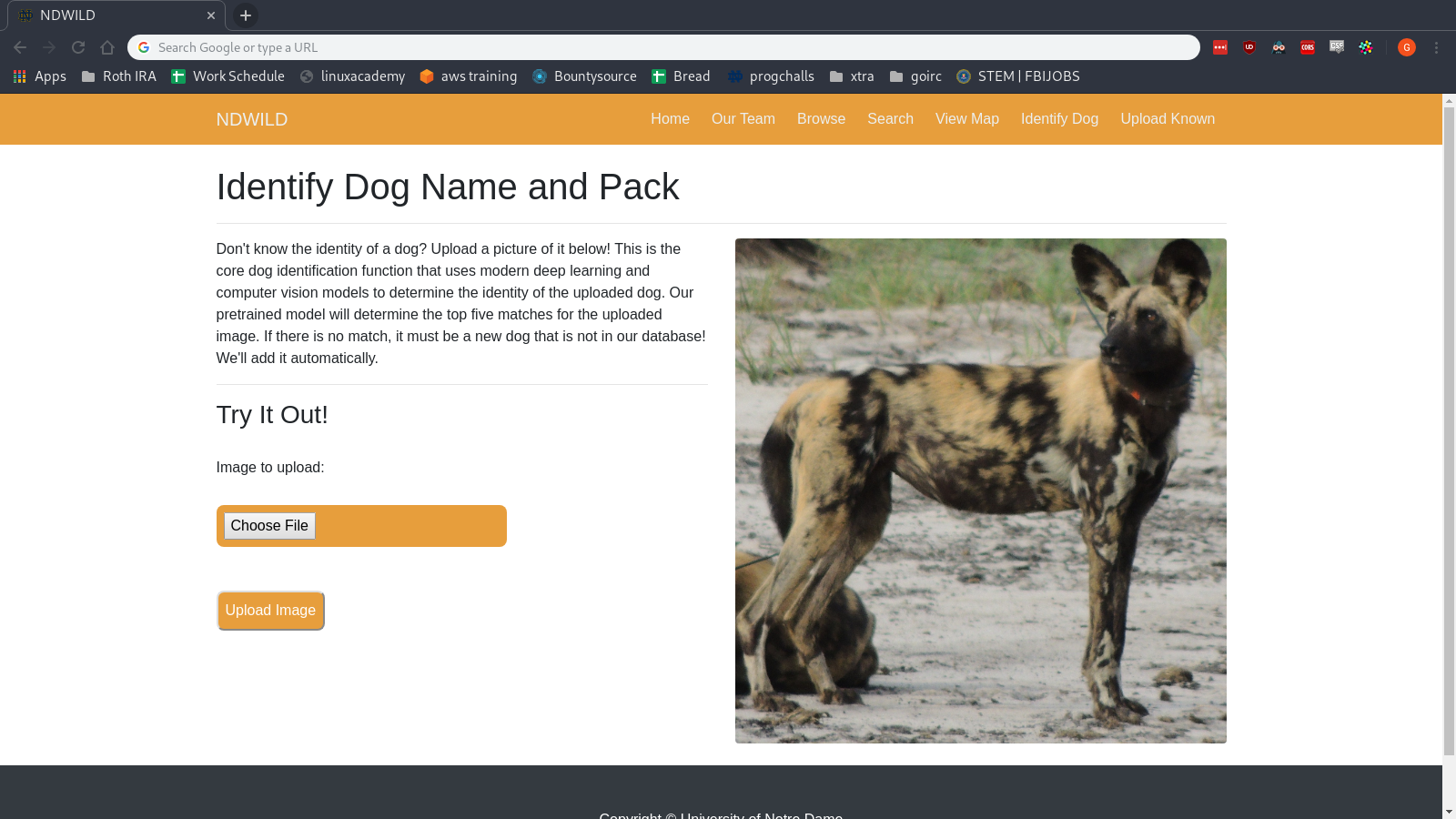In August of 2018, I began working on the Painted Dogs Project. This project is sponsored by the Notre Dame Mobile Computing Lab. The focus of the project is to give researchers in Zimbabwe access to a tool that allows them to track the movements and population of an endangered species, the Painted Dog. A future state goal of the project is to allow anyone, especially tourists, to use the site, so that the researchers can have as many pictures of the dogs as possible.
From our site:
We have developed a website, which combines the efforts of tourist sightings and researcher verification into a unified system that takes advantage of recent advances in mobile computing, deep learning and computer vision. We use current painted dog images to build a robust dog image identification and segmentation deep learning model and a dog re-identification deep learning model. Once the new sightings are verified by researchers, corresponding dog identities and images will be added into the database for further modeling training and dog re-identification.

A few features of the site:
- Matching tool for checking if a dog is in database
- This incorporated a machine learning model that was run every time an image was uploaded
- More about this below
- Live tracking of dogs via integration with Google Maps API
- Searching database by dog or pack to see images and information about dogs.
- Integration with AWS Cognito for researcher login

My responsibilities included:
- Collaborating with a graduate student and two undergraduate students on the Painted Dogs Project
- Enabling researchers to track the movement of painted dogs throughout Africa
- Building a database of painted dog images, locations, and descriptions using Amazon Web Services
- Optimizing website using Bootstrap and jQuery for improved ease of access for researchers
We built the application on Amazon Web Services. The core operating model worked like this:
- API Gateway facilitates an upload to an S3 bucket
- A Lambda function triggers on an upload to this S3 bucket, calls machine learning model to attempt to match dog
- The result of this matching function is made human-readable and sent to the website for the researcher to view

I am grateful to have had the opportunity to work on this project. I learned a great deal about Amazon Web Services, project development, and collaboration with offshore team members.
I have chosen to omit a link to the site as it is still a work in progress, and is only meant to be used by the researchers themselves. You can visit the site of the Notre Dame Mobile Computing Lab to learn more about this project and others.